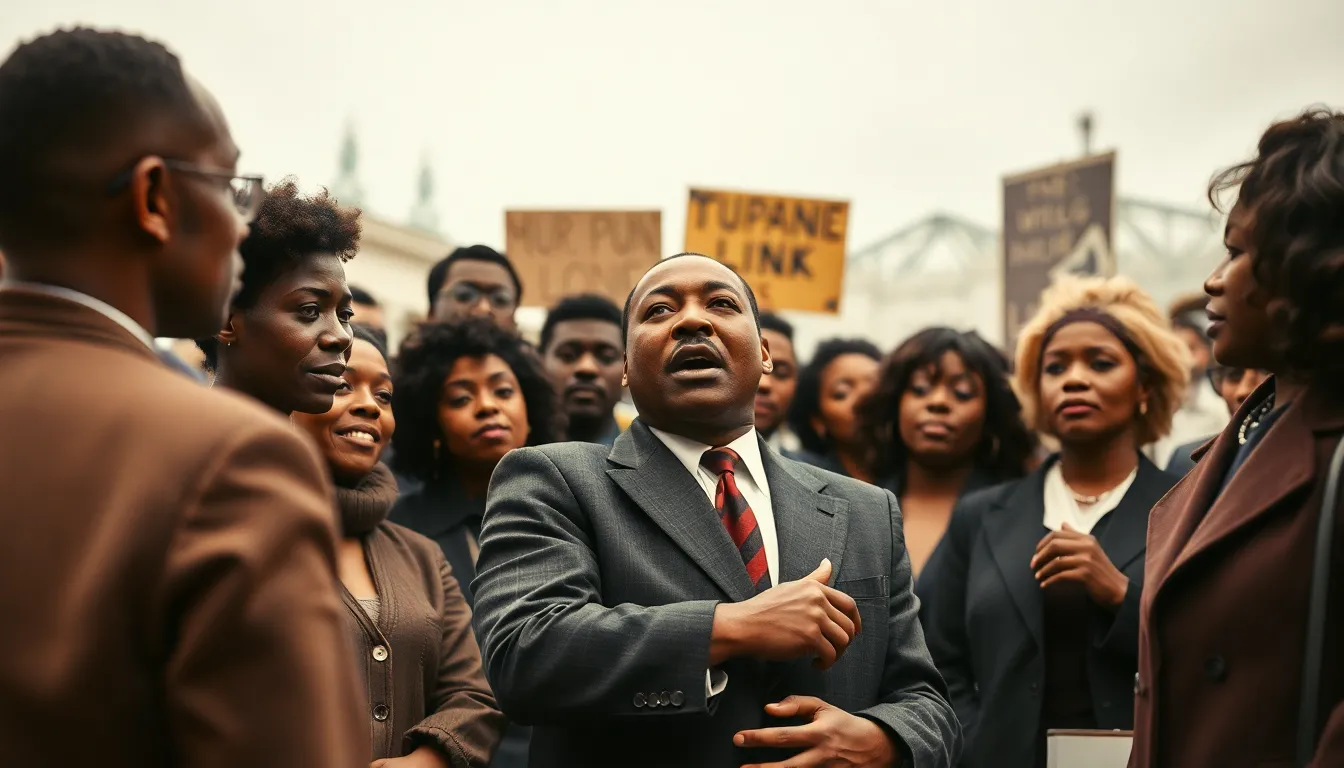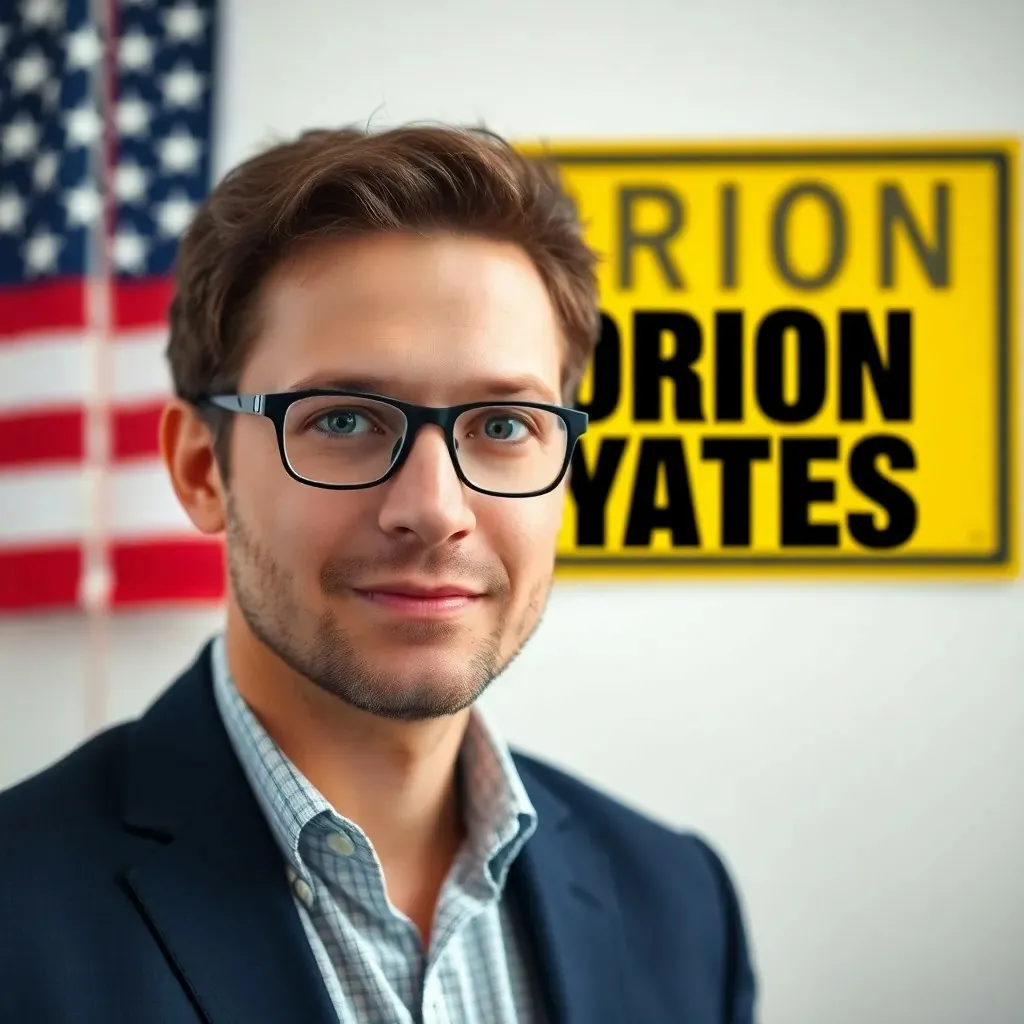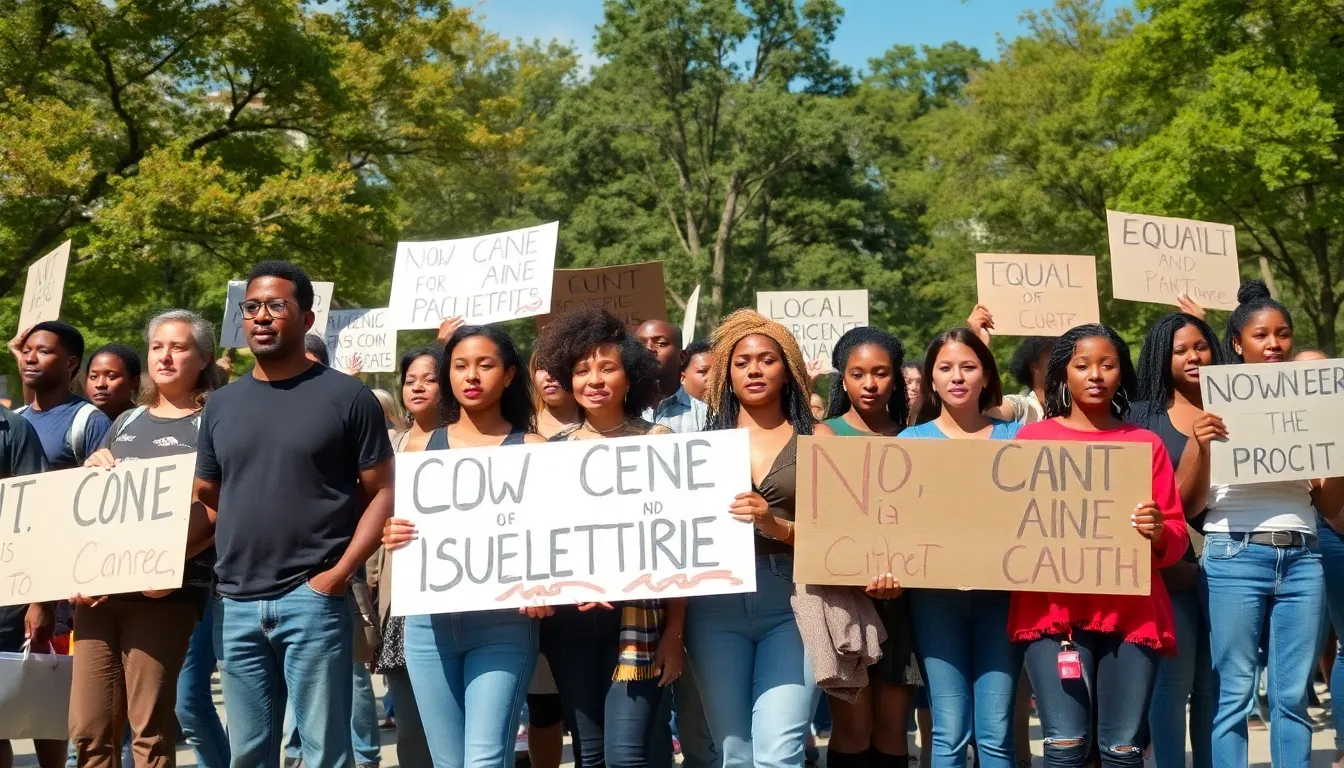Civil rights laws are like the superheroes of society, swooping in to protect individuals from discrimination and injustice. They ensure everyone gets a fair shot at life, liberty, and the pursuit of happiness—no capes required. These laws tackle everything from employment discrimination to voting rights, all while reminding us that equality isn’t just a nice idea; it’s a legal obligation.
But let’s face it, civil rights laws can seem as complex as assembling IKEA furniture without the instructions. Despite the confusion, understanding these laws is crucial for anyone who values justice and fairness. So buckle up as we dive into the fascinating world of civil rights laws, where history, activism, and a sprinkle of humor come together to create a more equitable society.
Table of Contents
ToggleOverview of Civil Rights Laws
Civil rights laws play a crucial role in ensuring fairness and equality. These laws protect individuals from discrimination based on characteristics like race, gender, age, religion, and disability. Various legislative acts, such as the Civil Rights Act of 1964 and the Voting Rights Act of 1965, set foundational standards for equality in employment, education, and public accommodation.
Protections under civil rights laws extend to different areas of life. The Fair Housing Act addresses discrimination in housing practices. Title IX of the Education Amendments prohibits gender discrimination in educational institutions. These laws compel organizations to foster inclusive environments.
Impact measures prove the significance of civil rights laws. Laws promote equal access to education, with increased enrollment of minority students in colleges. Employment protections have led to greater diversity in the workforce, enhancing productivity.
Advocacy organizations strongly influence the enforcement of civil rights. Groups like the NAACP and the ACLU work tirelessly to uphold these laws. They challenge unjust practices through litigation, public awareness campaigns, and direct action.
Legislation continues evolving in response to societal needs. Recent discussions focus on expanding protections against discrimination based on sexual orientation and gender identity. Courts regularly interpret these laws, shaping their application in modern contexts.
Understanding civil rights laws fosters an informed citizenry. Individuals can better advocate for their rights and the rights of others. Knowledge of these laws empowers individuals to challenge discrimination effectively, paving the way for a fairer society.
Historical Context

Civil rights laws emerged from a long history of struggle against discrimination and inequality. Several key milestones mark the journey toward civil rights in the United States.
Key Milestones in Civil Rights
The year 1865 marked the end of the Civil War and the abolition of slavery through the 13th Amendment. In 1954, the Supreme Court’s landmark decision in Brown v. Board of Education declared racial segregation in public schools unconstitutional. The Civil Rights Act of 1964 established comprehensive protections against discrimination in various sectors. Passing shortly after the Voting Rights Act of 1965, this act aimed to eliminate barriers preventing African Americans from voting. Notably, the Fair Housing Act of 1968 further reinforced civil rights by prohibiting discrimination in housing. Each of these milestones significantly advanced equality, shaping subsequent legislative efforts.
Major Figures in the Civil Rights Movement
Activists played critical roles in advancing civil rights. Martin Luther King Jr. championed nonviolent protest, galvanizing support through powerful speeches and marches. Rosa Parks’ refusal to give up her bus seat sparked the Montgomery Bus Boycott, highlighting the power of individual action. Malcolm X emphasized self-determination and was influential among the Black community. Figures like Thurgood Marshall fought in the legal arena, eventually becoming the first African American Supreme Court Justice. These individuals, among others, inspired generations and helped forge a more equitable society.
Types of Civil Rights Laws
Civil rights laws encompass a variety of legal protections against discrimination at both federal and state levels. These laws ensure fairness and equality across numerous aspects of life.
Federal Civil Rights Laws
Federal civil rights laws establish broad protections against discrimination, primarily through landmark legislation. The Civil Rights Act of 1964 prohibits discrimination in areas like employment, education, and public accommodations based on race, color, religion, sex, and national origin. The Americans with Disabilities Act (ADA) in 1990 further protects individuals with disabilities from discrimination in employment and public services. The Voting Rights Act of 1965 aims to eliminate barriers to voting for racial minorities, reinforcing access to the democratic process. These laws demonstrate the federal government’s commitment to safeguarding individual rights.
State Civil Rights Laws
State civil rights laws complement federal protections by addressing specific regional needs and issues. Many states have enacted their own civil rights statutes, often expanding protections to include categories like sexual orientation and gender identity. For example, California’s Fair Employment and Housing Act (FEHA) safeguards against discrimination in employment and housing, offering broader coverage than federal laws. State agencies enforce these laws, providing avenues for individuals to seek redress against discrimination. Overall, state civil rights laws play a crucial role in promoting equality at the local level.
Impact of Civil Rights Laws
Civil rights laws have sparked significant social change and raised awareness around important issues of equality and justice. Many individuals now recognize their rights and the importance of advocating for them. Education on civil rights fosters understanding, leading to grassroots movements that challenge systemic discrimination. Activism has blossomed in the wake of these laws, inspiring diverse groups to unite for collective action. Community organizations strengthen their outreach efforts to increase engagement and education on civic privileges.
Social Change and Awareness
Social change directly relates to the implementation of civil rights laws. These laws empower communities to stand against injustices, fostering a sense of agency among marginalized groups. Educational programs emerge within schools and community centers, promoting awareness of civil rights issues. Increased visibility of various social movements signals a shift in societal attitudes towards inclusivity. Many youths actively engage in advocacy, motivated to address issues such as race, gender, and LGBTQ+ rights.
Legal Precedents Set by Civil Rights Cases
Legal precedents established through landmark civil rights cases significantly impact the judicial landscape. Supreme Court rulings, such as Brown v. Board of Education, dismantled segregation, reshaping public policy. Courts interpret civil rights laws, creating pathways for future cases involving discrimination. These decisions frequently serve as benchmarks for lower courts grappling with similar issues today. Ongoing litigation regarding civil rights continues to refine legal standards, addressing developing concerns in society. Many cases influence both legislative measures and public attitudes towards equality.
Ongoing Challenges and Future of Civil Rights Laws
Ongoing challenges continue to affect the landscape of civil rights laws. Discrimination persists in various forms, including issues related to racial injustice and the fight for gender equality. Voter suppression remains a pressing concern, particularly for minority groups facing barriers at polling stations. The impact of systemic inequality influences the enforcement of existing laws and leads to calls for legislative updates. Many advocates demand protections covering sexual orientation and gender identity. Public awareness campaigns highlight these issues, reinforcing the need for change.
Current Issues in Civil Rights
Current issues in civil rights laws reveal significant obstacles that require attention. Racial profiling and police brutality spark national conversations about law enforcement practices. Media coverage often brings attention to discrepancies in treatment among different racial groups. Employment discrimination based on gender identity or sexual orientation affects countless individuals. Educational institutions still grapple with disparities in access and resources, impacting marginalized communities. Legislative hurdles slow progress in strengthening protections, leaving many vulnerable to discrimination.
Activism and Advocacy
Activism and advocacy play pivotal roles in advancing civil rights. Grassroots organizations mobilize communities to address injustices and promote awareness. Social media platforms amplify voices, allowing advocacy campaigns to reach broader audiences. Prominent figures within the civil rights movement continue to inspire new generations of activists. Many advocacy groups, such as the ACLU and Human Rights Campaign, push for legislative reforms to expand existing protections. Civic engagement empowers individuals to demand accountability from lawmakers and foster a culture of equality.
Civil rights laws serve as essential safeguards against discrimination and inequality. They not only create legal frameworks that promote justice but also inspire individuals to advocate for their rights. The ongoing struggle for equality highlights the need for continued vigilance and activism in the face of persistent challenges. As society evolves, so too must the understanding and application of these laws to ensure that every individual can fully enjoy their rights without fear of discrimination. Engaging with civil rights issues empowers communities and fosters a culture of inclusivity and respect.




